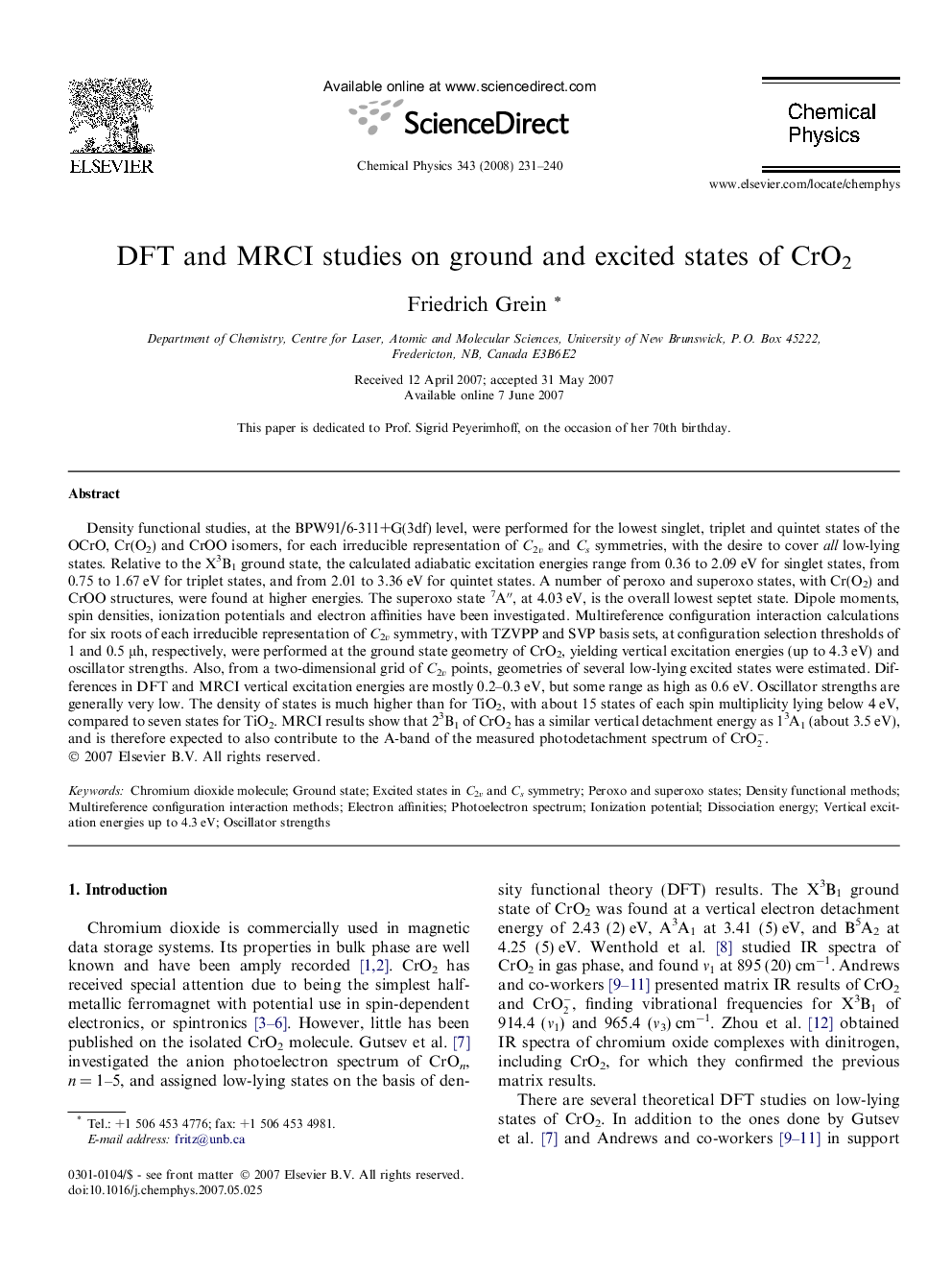| Article ID | Journal | Published Year | Pages | File Type |
|---|---|---|---|---|
| 5376242 | Chemical Physics | 2008 | 10 Pages |
Abstract
Density functional studies, at the BPW91/6-311+G(3df) level, were performed for the lowest singlet, triplet and quintet states of the OCrO, Cr(O2) and CrOO isomers, for each irreducible representation of C2v and Cs symmetries, with the desire to cover all low-lying states. Relative to the X3B1 ground state, the calculated adiabatic excitation energies range from 0.36 to 2.09 eV for singlet states, from 0.75 to 1.67 eV for triplet states, and from 2.01 to 3.36 eV for quintet states. A number of peroxo and superoxo states, with Cr(O2) and CrOO structures, were found at higher energies. The superoxo state 7Aâ³, at 4.03 eV, is the overall lowest septet state. Dipole moments, spin densities, ionization potentials and electron affinities have been investigated. Multireference configuration interaction calculations for six roots of each irreducible representation of C2v symmetry, with TZVPP and SVP basis sets, at configuration selection thresholds of 1 and 0.5 μh, respectively, were performed at the ground state geometry of CrO2, yielding vertical excitation energies (up to 4.3 eV) and oscillator strengths. Also, from a two-dimensional grid of C2v points, geometries of several low-lying excited states were estimated. Differences in DFT and MRCI vertical excitation energies are mostly 0.2-0.3 eV, but some range as high as 0.6 eV. Oscillator strengths are generally very low. The density of states is much higher than for TiO2, with about 15 states of each spin multiplicity lying below 4 eV, compared to seven states for TiO2. MRCI results show that 23B1 of CrO2 has a similar vertical detachment energy as 13A1 (about 3.5 eV), and is therefore expected to also contribute to the A-band of the measured photodetachment spectrum of CrO2-.
Keywords
Related Topics
Physical Sciences and Engineering
Chemistry
Physical and Theoretical Chemistry
Authors
Friedrich Grein,
